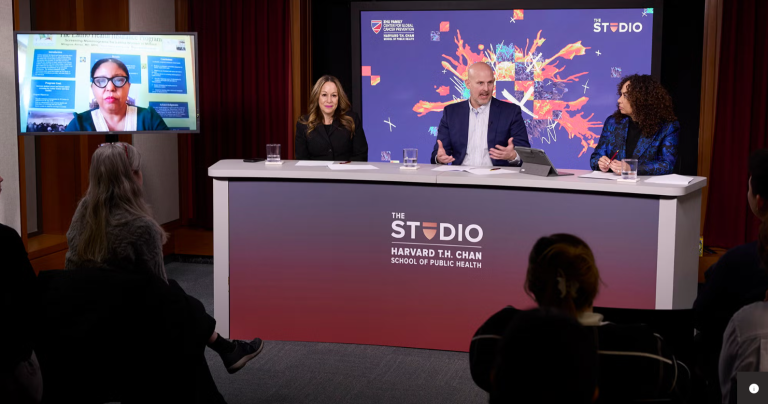Navigating the Labyrinth of Online Cancer Information: Experts Warn of Misinformation and Offer Guidance
The internet, a vast repository of information, has become a double-edged sword for cancer patients seeking knowledge about their disease. While offering access to potentially helpful resources, it’s also awash in a sea of misinformation, outdated advice, and potentially harmful recommendations. Experts at a recent Harvard T.H. Chan School of Public Health Studio event highlighted the pervasive nature of this problem, exploring the impact of online misinformation on cancer patients and offering strategies for both patients and healthcare providers to navigate this complex information landscape. The event coincided with World Cancer Week, underscoring the global urgency of addressing this issue.
The vulnerability inherent in a cancer diagnosis can make patients particularly susceptible to misinformation. The desire for certainty and a "magic bullet" cure, amplified by anxiety and fear, can lead individuals down dangerous paths. Experts warn that following misleading advice can have dire consequences, potentially jeopardizing a patient’s chance of recovery by leading them away from evidence-based treatments. The allure of simple solutions and miracle cures, often peddled by unreliable sources, can overshadow the complex realities of cancer treatment and prevention.
Misinformation permeates every stage of the cancer journey, from prevention and diagnosis to treatment and survivorship. Misleading claims about symptoms, treatment efficacy, and post-treatment life can cause undue stress and anxiety, leading patients to make ill-informed decisions. For instance, misinformation regarding prostate cancer symptoms or the impact of treatment on sexual health can lead to unnecessary panic or avoidance of conventional medical care. This underscores the need for accurate, accessible, and culturally sensitive information to counteract the spread of misleading narratives.
Research presented at the event revealed the alarming prevalence of misinformation on social media platforms. Studies evaluating online content related to prostate and bladder cancer found a staggering 40% of posts on platforms like YouTube, Instagram, and TikTok contained misinformation. While Pinterest and podcasts fared slightly better, a significant 15% of their content still contained inaccurate or misleading information. Even when information is accurate, it can be presented in ways that are inaccessible to the average person, lacking actionable guidance or requiring a high level of health literacy. Furthermore, the scarcity of content in languages other than English and the lack of representation for diverse populations exacerbate the problem.
The battle for attention on social media further complicates matters. Sensationalized claims and "miracle cures" often garner more engagement than evidence-based information, contributing to the spread of misinformation. The complexity of cancer information and the evolving nature of treatment recommendations can be difficult to communicate, particularly to patients who may already harbor skepticism towards the healthcare system. This can result in patients opting for unproven or disproven treatments, such as restrictive diets and unverified supplements, at the expense of conventional medical care.
The consequences of these choices can be devastating. Studies have shown that patients with curable cancers who choose alternative treatments have significantly lower survival rates compared to those who undergo evidence-based treatments. While complementary therapies like massage or mindfulness can be beneficial for coping with illness, some alternative nutritional advice can interfere with conventional treatment, potentially compromising its effectiveness. For example, drastic dietary restrictions leading to significant weight loss can negatively impact the efficacy of chemotherapy.
Healthcare providers play a crucial role in combating misinformation. While they remain the most trusted source of information, time constraints during appointments often limit opportunities to address all of a patient’s concerns. Acknowledging that patients will inevitably seek information elsewhere, providers must proactively equip them with the tools to identify reliable sources. This can include providing "information prescriptions" with links to reputable websites, such as university and government resources, and educating patients on how to critically evaluate online information. Simple guidelines, such as assessing the credibility of claims, looking for financial motivations, identifying anecdotal evidence, and verifying the publisher’s reputation, can empower patients to discern credible information from misinformation.
Building trust and understanding a patient’s values are paramount in countering misinformation. Open communication and addressing individual concerns within the context of a patient’s belief system can foster a collaborative approach to treatment decisions. Informal Q&A sessions and community engagement events can provide valuable opportunities to connect with patients, answer their questions, and disseminate accurate information in an accessible and engaging manner. Promoting healthy lifestyle choices through initiatives like cooking demonstrations and educational programs can further empower individuals to take control of their health and make informed decisions based on evidence-based recommendations. The collective effort to combat misinformation involves not only healthcare providers but also community organizations, educational institutions, and individuals committed to promoting health literacy and empowering patients to navigate the complex world of online health information.


